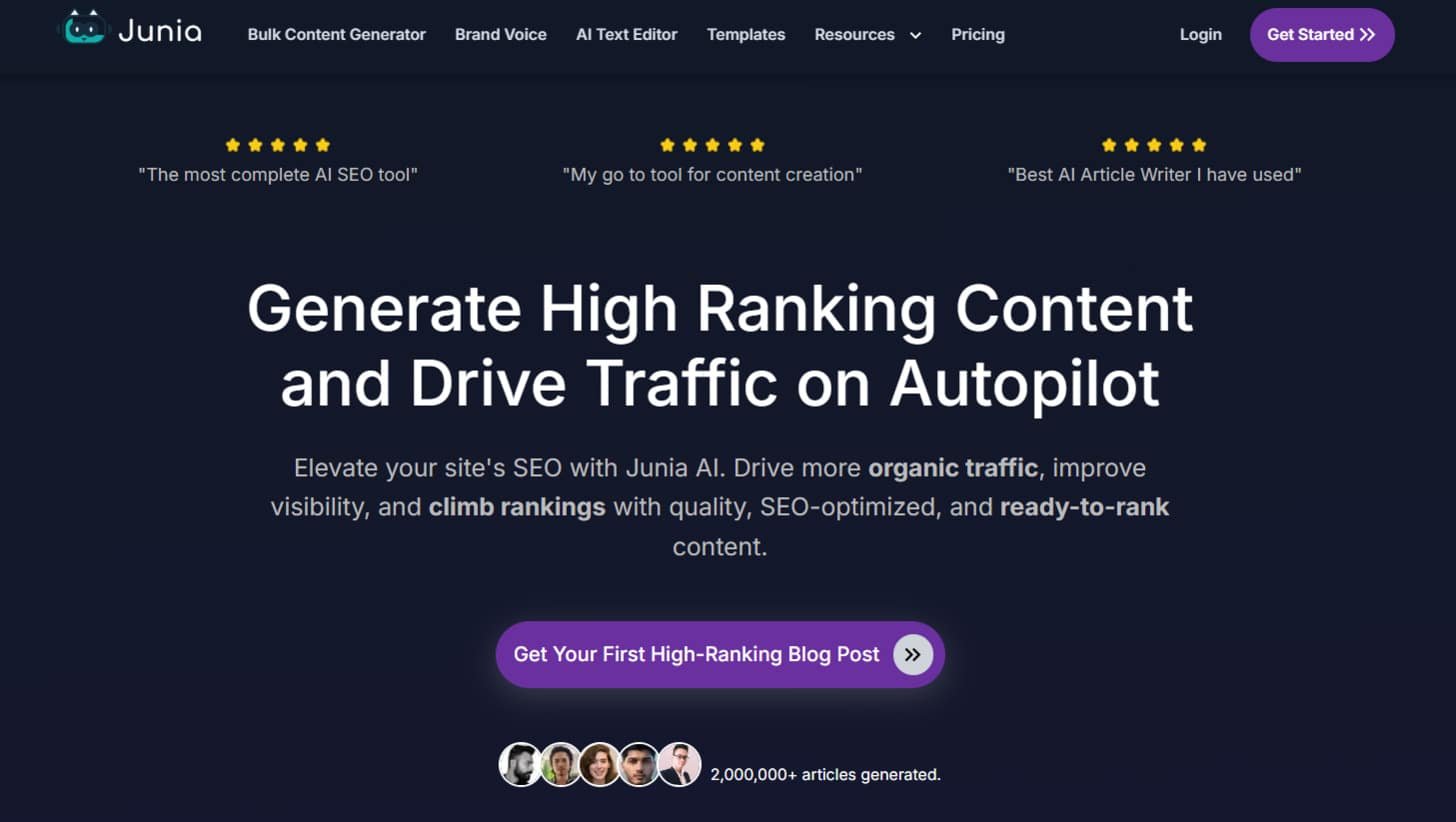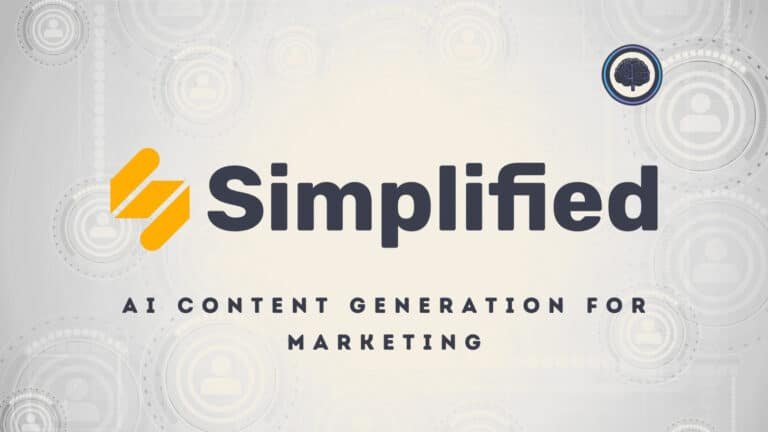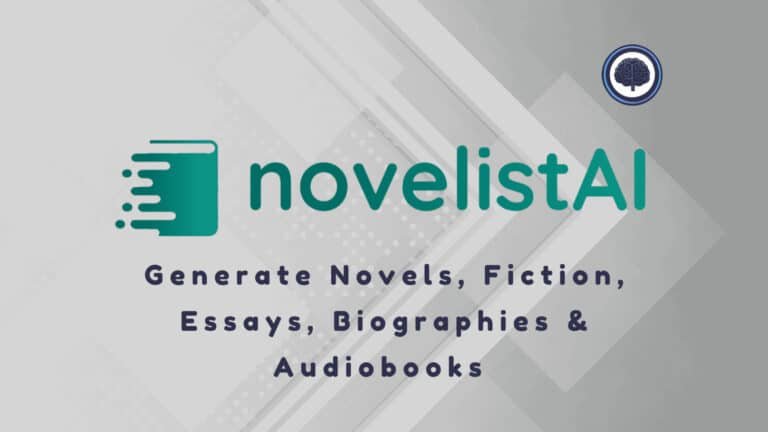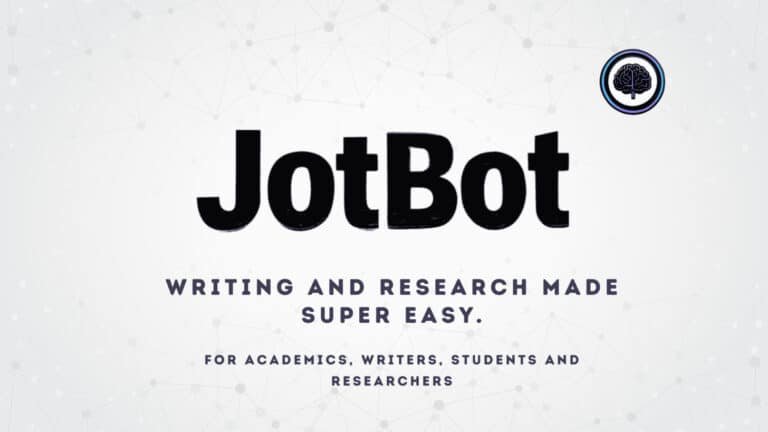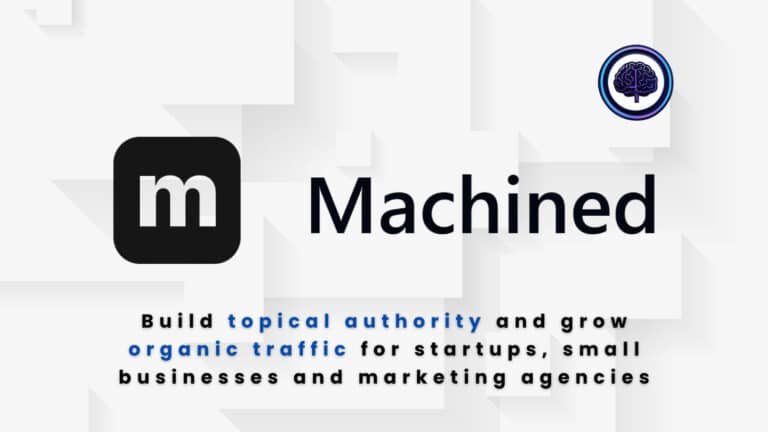Problem: You need high-ranking content fast, but stitching together keyword tools, editors, and publishing platforms wastes hours and frays focus.
Interest: I get it — I’ve sat through those messy workflows. It feels like you’re chasing rankings instead of shaping a clear brand voice for your audience. That friction slows teams and blunts creativity.
Desire: Enter a single platform built to handle competitor analysis, keyword research, real-time seo suggestions, and brand voice control — plus one-click publishing to WordPress, Shopify, Medium, and Webflow. In my experience, that combo speeds creation and keeps content consistent.
Action: In this review I’ll unpack plans (Free, Creator $19, Pro $39), templates, seat limits, standout features, pros and cons, and a case study of a small site hitting #1 on Google. If you want clarity on whether this tool fits your workflow, read on — Let’s dive in.
Key Takeaways
- This review explains where the product sits in today’s content and seo landscape.
- I cover pricing tiers, word caps, templates, and seat limits so you can compare plans.
- Expect a deep look at competitor analysis, keyword research, and real-time guidance.
- Publishing integrations reduce copy-paste and speed time-to-publish.
- We’ll weigh strengths (SEO depth, templates, tone control) against limits.
- Includes a practical case study and clear buy/no-buy guidance for creators and strategists.
Introduction to Junia AI: Where It Fits in Today’s AI Content Landscape
If you create content for search, you want fewer handoffs and more consistent output that actually ranks. This platform combines research, drafting, and one-click publishing so teams spend less time moving assets between apps and more time improving ideas for their audience.
Who created it and the mission behind the tool
The company behind the product built it to help content teams scale quality while staying true to SEO standards. Their mission is simple: give creators a single toolset for research, writing, optimization, and publishing so the work is faster and more consistent.
Why modern writers and tools are reshaping search engine results
Writers now optimize for topics and entities, not just keywords. That shift changes how search engine results are won—depth, internal links, and on-page signals matter more than ever.
- Faster drafts: what took days now starts in minutes, freeing time for strategy and outreach.
- Real-time guidance: SEO suggestions as you type reduce back-and-forth editing.
- Integrated publishing: WordPress, Shopify, Medium, Reddit, and Webflow hooks cut friction.
Creators, marketing teams, and small publishers use and endorse tools like this when they need competitive SERP intel and consistent brand voice.
In short, it’s less about replacing writers and more about removing mechanical work so you can focus on differentiation and value when producing content.
What is Junia AI?
Think of this platform as a writing cockpit—it combines large language models technology, tooling for SEO, and content workflows so you can move from brief to publish faster. I’ve used it to draft outlines and polish posts without leaving the editor.
Under the hood: GPT-4-class tech and advanced algorithms
The engine uses GPT-4-class LLMs plus NLP, topic modeling, and machine learning to map SERP intent. That stack suggests entities, headings, and internal-link opportunities that align with search signals.
Why that matters: the model produces first drafts structured for clarity and SEO, while grammar and plagiarism checks run inline—so generated content arrives cleaner and quicker.
Core value: consistent tone and high-quality creation
The real win is control. You define a brand voice (or select a preset) and the system maintains a consistent tone across posts. Templates (50+) and multilingual support (30+ languages) let teams scale localization without losing messaging.
- Speed: generate high-quality drafts tailored specific to briefs.
- Consistency: maintain consistent tone and brand voice across collaborators.
- SEO-first features: real-time suggestions, entity guidance, and outline nudges.
Who Junia AI Is For
Think of it as a productivity multiplier for groups that ship a lot of search-focused content. I’ve seen it work best where speed and consistency matter most.
If you manage deadlines, briefs, and multiple channels, this tool helps reduce handoffs and keeps deliverables aligned with your brand.
Who benefits:
- SEO-focused marketers and bloggers: faster outlines and fewer revision rounds for high-volume publishing.
- Agencies: shared templates and brand profiles make repeatable client work painless.
- Solopreneurs and startups: quick research and first drafts that let you own strategy, not just production.
- E-commerce teams and nonprofits: spin up product copy or educational pieces without losing voice.
It supports up to 10 seats and 50+ templates, plus CMS integrations for smooth distribution. If your content needs center on speed, governance, and measurable SEO impact, this setup aligns well with your audience and team scale. If you prefer crafting every sentence by hand, you might underuse the automation—this shines when you want scale plus quality.
Getting Started: Onboarding, Workflow, and Using Junia
Start your blog post workflow by turning a topic idea into a clear outline that maps to search intent. I walk through a five-step path I use daily: research → outline → draft → optimize → publish. This keeps work focused and repeatable for any content team.
From idea to outline
Begin with keyword research—discover trends, volume, and gaps, then cluster terms into H2/H3s that match intent. I drop competitor URLs early so SERP intel shapes coverage and avoids thin sections.
Draft to polish
Draft blog post quickly, then apply machine learning suggestions for clarity and missing entities. Built-in grammar and plagiarism checks tighten the polish stage—no switching tools. Readability hints help make blog posts simpler for broader audiences.
Publishing pipeline
Real-time SEO nudges guide keyword placement, headings, and internal links as you write. One click sends final content to WordPress, Webflow, Shopify, or Medium—handy when you publish across channels and social media.
- Templates: repeatable briefs and outlines for pillar pages and tutorials.
- Brand voice: saved settings keep every contributor on tone.
- Tracking: light calendar to log where content shipped.
| Step | What it checks | Outcome |
|---|---|---|
| Research | Trends, volume, competitor SERPs | Intent-aligned topic list |
| Outline | H2/H3 mapping, entity coverage | Clear structure for writers |
| Draft & Optimize | Grammar, plagiarism, readability, SEO nudges | Publish-ready copy |
| Publish | CMS integration & distribution | Cross-platform live content |
Best Features
Below I break down the feature set that helps teams research, draft, and publish without the usual friction. Each capability focuses on practical gains: faster creation, fewer edits, and more consistent, search-friendly content.
1. AI Writer for SEO & Content Generation
Junia AI’s core writing tool excels in review for fast articles production. It handles SEO from start to finish, helping users build websites with high-ranking material.
1.1 One-Shot Long Article Creation
Generate up to 6,000-word pieces with one click, including research and images. This capability cuts the content creation process time, allowing websites to launch SEO-ready posts quickly and attract organic visitors.
1.2 SEO-Optimized Content
Produces 99% human-like output with 85% SEO scores. In reviews, it outperforms rivals by matching top results, so users see websites rise in rankings during the content creation process.
1.3 Long-Form Content
Specializes in 3,000+ word formats like pillar pages. This builds authority, as user experiences show in reviews, helping websites gain backlinks and sustain traffic growth.
1.4 Auto SEO Research
Analyzes competitors for outlines and strategies. This writing tool feature uncovers gaps, enabling users to target high-value queries and refine their content creation process effectively.
1.5 Keyword Analysis
Identifies traffic-rich terms with low competition. Reviews highlight its role in precise targeting, boosting website conversions without wasted effort.
1.6 Internal and External Linking
Adds natural links to enhance structure. It improves crawlability, per user experiences, supporting stronger SEO in the content creation process.
1.7 Multi-Language Support
Covers 30+ languages for broad reach. This expands websites globally, as noted in reviews, without extra translation steps.
1.8 End-to-End Content Workflow
Manages ideation to publishing seamlessly. This capability ensures consistent quality, helping users scale content creation across platforms.
2. AI Bulk Content Generator
Bulk generation scales content creation for volume needs. Reviews praise this writing tool for agency-level output on multiple websites.
2.1 Mass Content Creation
Creates hundreds of unique items at once. It maintains standards, so users handle demand spikes in the content creation process without quality loss.
2.2 Customizable Content
Adjusts tone, length, and links per batch. In reviews, this fits diverse platforms, ensuring tailored results for varied websites.
2.3 Auto-Publishing
Connects to WordPress and Shopify for direct posts. This capability automates distribution, freeing time for strategy over logistics.
2.4 Brand Voice Adaptation
Aligns output with style guidelines. User experiences confirm it preserves authenticity, key for trust on websites.
2.5 Scalable Production
Supports 1,500–4,000 words per piece efficiently. Reviews note its growth potential for expanding content teams.
2.6 Real-Time Internet Access
Incorporates fresh data for accuracy. This keeps articles current, enhancing website relevance in fast niches.
2.7 Ethical Considerations
Promotes original work to avoid issues. It guides safe practices in the process, as per reviews.
3. Brand Voice Feature
This ensures uniform tone in outputs. Reviews value it for cohesive branding on platforms.
3.1 Custom Brand Voice
Trains on samples for mimicry. This writing tool capability matches identity, aiding websites in audience retention.
3.2 Consistent Messaging
Applies voice across channels. It cuts revisions in the content creation process, per user experiences.
3.3 Content Analysis
Evaluates tone for insights. Reviews show it sharpens strategies with clear details.
3.4 Style Guide Creation
Forms reusable standards. This unifies team work on website, maintaining flow.
3.5 Applications
Fits businesses and creators. It broadens use across platforms for versatile needs.
4. AI Text Editor
Polishes drafts with smart aids. As a writing tool, it refines content creation for better websites.
4.1 Rich Text Editor
Expands notes to sections. This feature builds depth efficiently for users.
4.2 AI-Powered Editing
Handles paraphrasing and citations. It elevates quality in the content creation process, ensuring readability.
4.3 Built-In Image Generator
Produces fitting visuals fast. Reviews credit it for higher engagement on websites.
4.4 Content Optimization
Crafts metas and FAQs. This lifts traffic with targeted details.
4.5 AI Content Detector
Verifies originality. Users rely on it to meet standards and avoid flags.
4.6 One-Click Publishing
Shares to social platforms. It speeds launches, streamlining workflows.
4.7 Built-In AI Chat
Offers on-demand tweaks. In reviews, it boosts iteration speed.
5. AI Writing Templates
50+ ready structures accelerate starts. This writing tool aids varied content creation & blog post.
5.1 50+ Templates
Spans reviews to guides. Users adapt them for specific articles.
5.2 Customizable
Tweaks for fit. Reviews laud ease in the process.
5.3 SEO-Focused
Includes optimization built-in. It positions websites for top spots from launch.
5.4 Multi-Platform Compatibility
Integrates with CMS options. This supports broad deployment.
5.5 Continuous Updates
Refreshes with trends. Keeps content strategies current.
6. Additional Tools and Features
Extras enhance core capabilities. Reviews spotlight their depth for websites.
6.1 AI-Powered Visuals
Generates CTR images. Boosts appeal in content displays.
6.2 Content Authenticity
Balances SEO with naturalness. Prevents drops, as experiences indicate.
6.3 Data Security
Encrypts details fully. Fosters secure use for users.
6.4 Microsoft Partnership
Delivers reliable tech. Reviews affirm pro support levels.
6.5 High User Ratings
Scores 4.8/5 on ProductHunt. Proves value in real applications.
7. Help Centre and Support
Guides ease adoption. Reviews commend quick access.
7.1 Comprehensive Guides
Details all features. Aids mastery of the content creation process.
7.2 User-Friendly Resources
Suits beginners. Simplifies setup for new websites.
7.3 Responsive Support
Email for queries. Resolves issues promptly, keeping users productive.
SEO Capabilities That Elevate Content Quality
Good SEO starts with covering the right concepts—not guessing what readers and bots expect. I find that tactical checks for entities, internal links, and headings turn an okay draft into a page that competes. These are practical lifts you can apply every time you publish.
Entity coverage, internal linking, and on-page optimization
Entity coverage nudges ensure the article answers the topic fully. That prevents “almost there” pages that lack depth.
Internal linking prompts recommend anchor text and targets so authority flows where it helps most. This improves crawl paths and supports hub-and-spoke architectures.
On-page checks keep basics tight: title tags, meta descriptions, alt text, and scannable headings. These small fixes reduce QA cycles and raise quality before publish.
Optimized structure: H1/H2/H3 hierarchy for better engine results
A clear H1/H2/H3 hierarchy helps both readers and search engines parse intent fast. Templates align headings to what ranks, so structure and discovery improve in tandem.
Data-driven insights to ensure content resonates with your audience
The analysis isn’t random—suggestions map to what’s working in the SERP for your query. Real-time SEO prompts catch gaps and readability issues, which often cuts revisions.
| Feature | What it fixes | Result |
|---|---|---|
| Entity prompts | Missing subtopics | Stronger topical authority |
| Link suggestions | Poor internal distribution | Better crawl equity |
| On-page checks | Meta/headline errors | Cleaner UX & higher CTR |
Net effect: pages that are content optimized, easier to read, and more likely to climb in search engine results—without resorting to stuffing. These features help ensure content resonates with your audience and elevate content quality every time you publish.
Brand Voice and Consistency Across Content
Define a voice that scales—so product pages and blog posts both sound like you. I set voice profiles once and reuse them across campaigns. That saves time and keeps messaging tight.
Unlimited custom tones let you switch between conversational blog posts and formal product copy without losing the core personality. You tune sentence length, formality, and tone style so pieces stay approachable but authoritative.
Humanizer features for natural, engaging content
The Humanizer helps make writing feel human—readable, conversational, and aligned to your audience’s expectations. It softens robotic phrasing and keeps sentences varied so the content reads naturally.
How teams maintain consistent tone across content
For teams, guardrails lock in style rules. Editors use voice profiles to move between thought-leadership and transactional pieces without rewriting from scratch. Local editors can preserve nuance for multi-market work.
- Define once, reuse everywhere: every page sounds like the same brand.
- Unlimited tones: adapt for emails, product pages, and blogs.
- Polish without losing warmth: grammar and plagiarism checks keep content clean and human.
| Capability | What it controls | Result |
|---|---|---|
| Voice profiles | Formality, sentence length, tone style | Consistent tone across content |
| Humanizer | Natural phrasing, conversational flow | More engaging content |
| Guardrails & checks | Grammar, readability, plagiarism | Polished, on-brand creation |
Integrations and Platform Compatibility
When your editorial hub talks to multiple CMSs, you save hours and avoid copy-paste errors. I find the right integrations speed publishing and keep content consistent across channels.
WordPress and Shopify: Streamlined CMS workflows
Connect WordPress to publish drafts without leaving the editor—ideal for teams posting daily. This reduces handoffs and speeds up the last-mile publish process.
Shopify hooks help push product descriptions and collection pages directly from the same interface. That means merchandising and inventory changes reflect on the store faster.
Medium and Webflow: Multi-channel publishing made easy
Webflow and Medium support lets you syndicate articles and maintain brand presence on high-authority platforms. Use parasite SEO tactics on Medium to gain early visibility while your domain authority grows.
Push ready-made blog posts with images and alt text so you avoid fiddly uploads later.
Importing, exporting, and managing content at scale
Import/export features keep workflows flexible—plan and optimize in the hub, stage and approve in your CMS. Version tracking makes it simpler to manage a wide range assets or series.
- Multilingual support (30+ languages) speeds local reviews and adaptation.
- Package posts for reuse—users create once, then repurpose for social media and newsletters.
- Fewer copy-paste errors, faster release cycles, cleaner governance.
| Integration | Best use | Outcome |
|---|---|---|
| WordPress | Daily publishing, editorial workflows | Faster time-to-publish |
| Shopify | Product and collection pages | Tighter merchandising cadence |
| Medium / Webflow | Syndication and brand awareness | Early visibility, multi-channel reach |
Net: these integrations turn a toolset for research and writing into an end-to-end creation pipeline. The result is faster publishing, consistent content, and fewer bottlenecks for teams scaling output.
Performance, Accuracy, and Content Quality
Quality content begins when the first draft already maps to your brief and what users expect from search. I find that machine learning refinements cut off-topic drift and make the first pass usable.
Machine learning enhancements for contextually accurate drafts
Advanced algorithms steer generated content toward the right entities and structure. That means outlines often match SERP intent, so your team spends less time fixing direction and more time adding insight.
Plagiarism and grammar checks to ensure content quality
Built-in plagiarism detection protects originality—vital for SEO and your brand reputation. Grammar and style suggestions tighten prose so pages read clean and professional.
- Fewer rewrites: clear outlines = better first drafts.
- Real-time checks: flag missing sections, weak headings, and readability issues.
- Multilanguage support: preserves syntax and clarity across languages.
| Capability | What it fixes | Benefit |
|---|---|---|
| Machine learning | Off-topic drift, weak structure | Drafts aligned to brief and search intent |
| Advanced algorithms | Missing entities, poor coverage | Stronger topical authority |
| Plagiarism & grammar checks | Duplicate content, sloppy prose | Trustworthy, cleaner publishing |
Outcome: faster production, improved content quality, and pages that actually resonate with readers and search engines—without bloating copy.
Pricing of Junia AI
Pricing is simple: pick a tier based on word limits, SEO features, and how many seats your team needs.
Free Plan
Starts at $0/month or $0/yearly with 50% off (saves $0). Includes 5,000 words, 50+ content templates, chatbot, AI content editor, AI image, no credit card needed. Ideal for testing content creation on a website in a few days using basic technology.
Starter Plan
Start with $34/month, or $17/month yearly with 50% off (saves $204). Adds up to 5 AI articles, premium AI models, unlimited websites, brand voice, infobase, integrations, auto-linking, Google indexing, SEO mode, unlimited AI commands, 20,000 words. Boosts content creation for growing websites in days.
Advanced Plan
Starts at $59/month, or $29.50/month yearly with 50% off (saves $354). Includes 68 AI articles, bulk generation, auto-blogging, translation, linking, team invites, API access, competitor keywords, unlimited outlines, 100,000 words. Powers high-volume product teams scaling content creation.
Customize Your Plan
Tailor features and pricing (monthly/yearly, 50% off). Perfect for niche product needs, enhancing website output with flexible technology.
Pros & Cons
Let’s run through the advantages that speed content production—and the limits that matter at scale. I’ll list the wins first, then call out the trade-offs so you can judge fit fast.
Pros
- Affordable tiers ($19 / $39) that pack advanced SEO features and real-world value for small teams.
- 50+ templates and competitor analysis that reduce guesswork and speed outlines to publish-ready drafts.
- Brand voice controls keep tone consistent across contributors—useful when multiple writers touch the same content.
- Real-time suggestions for writing, plus grammar and plagiarism checks that protect content quality.
- Integrations with WordPress, Shopify, Medium, and Webflow make multi-channel publishing smoother than most similar tools.
- Parasite SEO support helps get visibility fast while your domain authority grows.
Cons
- Seat caps (up to 10) limit fit for larger enterprises—plan license counts early.
- Language support covers 30+ locales, which is solid but not exhaustive for global teams.
- Refund policy messaging varies—use the Free plan to validate workflow and confirm terms at checkout.
Summary: This is a strong, SEO-first package for small to mid-size teams. If scale, governance, or niche language coverage matters most, look at alternatives next in this review.
Alternatives to Consider
Picking the right creation stack depends on whether you prioritize short-form conversion, deep topic authority, or an all-in-one flow. Below I compare several popular tools so you can match features to your team’s goals and publishing cadence.
Jasper
Best for templated copy and marketing angles. Jasper excels at ad copy, email sequences, and short-form content with many ready-made templates. If your needs focus on conversion and speed for paid channels, Jasper is efficient. For long-form, research-heavy content, look for stronger topic coverage elsewhere.
Surfer SEO
Optimization specialist. Surfer shines as an audit and on-page optimizer—pair it with a writer. Unlike tools that combine creation and optimization, Surfer focuses on data-driven scoring and content audits you can apply to drafts.
Copy.ai
Conversion-first writing. Great for landing pages and emails, Copy.ai helps teams crank persuasive copy quickly. It’s less focused on deep research and long-form structure than some competitors, so consider it when conversion copy is your primary metric.
Writesonic
Idea generation and fast outlines. Writesonic is useful for brainstorming headlines, outlines, and social snippets. Its workflows are quick, but for multilingual publishing and tight SEO guidance, choose a platform built for research and publishing.
Rytr
Creative drafting and experimentation. Rytr fits solo creators who experiment with tone and short-form storytelling. If you need SERP-aware guidance and competitor analysis, opt for a tool that embeds those SEO features in the writing flow.
My take: If you already use an optimizer like Surfer, you can still centralize drafting and publishing by choosing a creation-plus-optimization hub. Teams focused on ads or email might prefer Jasper or Copy.ai. For content-led growth and search authority, pick the tool that combines deep research, real-time SEO nudges, and reliable publishing integrations.
| Tool | Strength | When to choose |
|---|---|---|
| Jasper | Templates, short-form speed | Ads, email, and quick marketing copy |
| Surfer SEO | Optimization & audits | When you need tight on-page scoring |
| Copy.ai | Conversion copy | Landing pages and sales funnels |
| Writesonic | Ideation & outlines | Brainstorming and social media drafts |
| Rytr | Creative experiments | Short-form storytelling and tone tests |
Case Study / Personal Experience
I watched a small niche site climb to the top of Google after a focused, data-first content push. The win came from mapping competitors, tightening coverage, and shipping consistently. That simple sequence beat guesswork.
How a small site hit #1 on Google using the platform’s SEO tools
A site used competitor analysis to find content gaps, then followed real-time prompts to add missing entities and FAQs. They structured H2/H3s, built internal links, and published a syndicated piece on Medium for quick visibility.
Result: #1 for a competitive keyword, higher time on page, and quicker organic traffic gains.
My Experience: From outline to on-brand blog posts that drive search traffic
My workflow was simple: research → outline → draft → refine tone → add internal links → publish to WordPress. I kept briefs tight so drafts required editing for nuance, not cleanup.
I shipped one strong post weekly, then repurposed sections for social media and email. Blog posts performed better after broadening entity coverage and adding real user FAQs.
| Metric | Before | After |
|---|---|---|
| Search position (target keyword) | Page 3 | #1 |
| Time on page | 1:20 | 3:05 |
| Stakeholder rewrites | High | Low |
Support, Documentation, and Community
Solid onboarding turns a promising tool into a dependable part of your workflow. The platform’s support centers on practical resources so you can move from concept to publish fast.
Knowledge base, templates, and workflow guides
The knowledge base focuses on step-by-step guides—lots of screenshots and examples, not fluff. These guides show how to turn templates into repeatable workflows for content creation.
Starter frameworks help you set a brand voice, cluster keywords, and map H1/H2/H3 outlines. Follow them and you’ll reduce revision rounds and improve readability for your audience.
Contact channels, onboarding help, and learning resources
Email support is the main contact channel and tends to be responsive—good for async help while you build. For faster adoption, I suggest a 60-minute onboarding run:
- Define your brand voice.
- Import topic lists and build two outlines.
- Publish one draft to test the publishing pipeline.
Community tips (where present) usually focus on outline hygiene and internal linking—two small practices that move the needle on SEO and engagement.
Practical notes: documentation is pragmatic and example-driven. Confirm current billing and refund terms on the billing page—sources differ, so the Free plan is the safest way to test the workflow first.
| Resource | What it helps | Best for |
|---|---|---|
| Knowledge base | Step guides, screenshots | Self-paced onboarding |
| Templates & frameworks | Brand voice, outlines, keyword clusters | Repeatable content creation |
| Email support | Account, billing, troubleshooting | Async help for creators |
Who Should Buy Junia AI—and Who Shouldn’t
Choosing the right platform comes down to workflow fit, team size, and what outcomes you chase. I’ll lay out who benefits most and when another option may serve you better.
Top choice for SEO-focused content creators and marketing teams
Buy this if you want a top choice that combines research, drafting, and optimization into one consistent workflow. I find it sensible for teams focused on organic growth and topical authority.
- Best for: content creators and small teams that publish long-form articles, documentation, or SEO landing pages.
- Governance: brand voice controls keep multiple contributors aligned.
- Publishing: WordPress and Shopify connectors speed the last-mile publish process.
- Scale: affordable Free → Creator plans to test before committing.
- Outcome: steady organic traffic gains and clearer content production lanes.
When alternatives may fit better for niche creative needs
If your primary work is ad copy, emails, or experimental creative writing, consider narrower tools tuned to those outputs. Your content needs should guide the choice.
- Choose Jasper or Copy.ai if conversion copy and fast ad variants drive ROI.
- Stick with Surfer SEO if you already run deep audits and prefer a standalone optimizer.
- Pick Rytr for fiction, poetry, or playful creative experiments.
- Validate seat counts and language coverage if you require hundreds of users or niche locales beyond 30+ languages.
“Match the platform to outcomes: topic authority and organic growth vs. pure conversion or creativity.”
| Fit | Best for | Consider alternatives when |
|---|---|---|
| Core publishing teams | Long-form, SEO pages | Heavy ad copy or email funnels |
| Small agencies | Brand voice & multi-author workflows | Need hundreds of seats or niche languages |
| Solo creators | Affordable plans to ramp quickly | Prefer separate specialist tools already in use |
Bottom line: choose based on outcomes. If organic search and consistent content production matter, this platform is a strong match. If your main goal is conversion copy or creative play, explore the niche options first.
Junia AI Review: Overall Verdict
Verdict: I find this platform a pragmatic, SEO-first content tool that helps teams ship high-quality content faster without losing voice. It blends research, drafting, optimization, and publishing in one place—so you spend less time juggling apps and more time on ideas.
Why it works: competitor analysis, real-time suggestions, and brand voice controls make it a reliable daily driver. Templates, grammar and plagiarism checks, and integrations with WordPress, Shopify, Medium, and Webflow keep the end-to-end workflow tight.
- Pricing: accessible Creator ($19) and Pro ($39) tiers—scale only when you hit bandwidth limits.
- Capacity: supports up to 10 seats and 30+ languages, which fits most small teams and international needs.
- Outcomes: expect faster creation, cleaner publishing, and measurable SEO gains (the case study showed a #1 search result).
In 2025, when speed and topical authority matter, this platform helps elevate content without bloating processes. If your goal is building topical authority and steady organic growth, it’s a top choice to test.
Practical next step: start on the Free or Creator plan, ship two posts, measure search performance and engagement, then scale. Keep humans in the loop—drafts speed work, but editorial judgment wins trust and search engine results.
Conclusion
Bottom line: this platform blends planning, drafting, and optimization into a single flow so you spend less time juggling and more time publishing. The mix of templates, brand voice controls, and real-time seo guidance makes scaling content creation achievable for small teams and solo creators.
I recommend starting on the Free or Creator plan—ship one optimized article this week, track results, then upgrade if you need higher output. Integrations keep distribution simple across WordPress and social media, so publishing momentum matters as much as ideas.
My take: use the tool to accelerate drafting, but keep your editorial judgment front and center. When results matter, pick the solution that shortens time-to-publish without losing quality—then measure impact.

